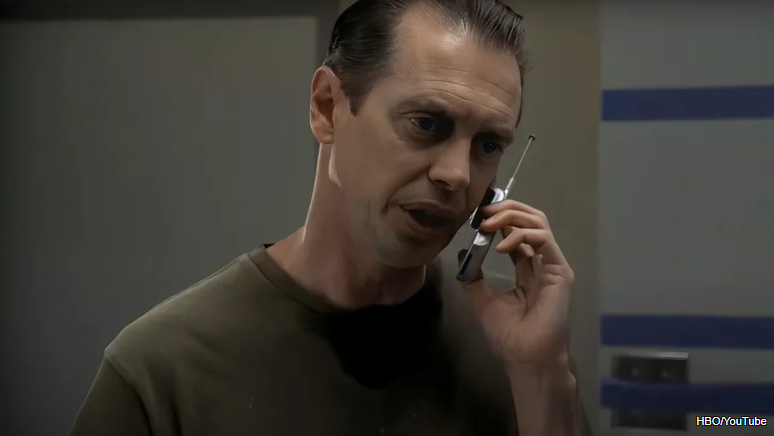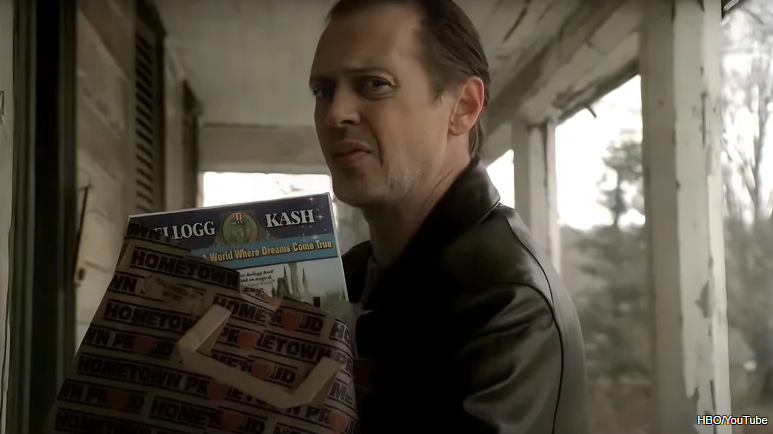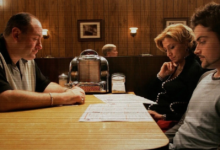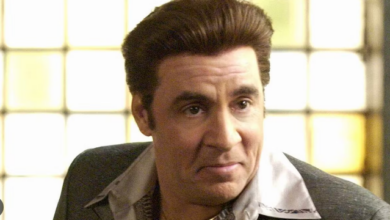The Sopranos: Which Episodes Did Steve Buscemi Direct & Why Were They Important?

One of the most notable things about “The Sopranos” is how many characters the show introduces over the course of its six seasons. In fact, short of other HBO series like “The Wire” or “Game of Thrones,” the groundbreaking crime drama may have the most recurring characters of any show the network has ever produced.
“The Sopranos” didn’t really slow down with introducing new characters in its final seasons either. Case in point, Tony B. (Steve Buscemi), Tony Soprano’s (James Gandolfini) cousin, who shows up in Season 5 of the series. However, something that some fans might not be aware of is that Buscemi also worked on the series behind the camera.
The well-known character actor directed four episodes of “The Sopranos,” the most famous of which bears a striking resemblance to one of Buscemi’s most famous movies. There’s definitely a dash of “Fargo” at play in “Pine Barrens,” an episode that follows two bumbling crooks who get increasingly out of their depth and regularly consider turning on one another in the snowy wilderness. However, something else that’s notable about the episode is how funny it is, despite the dark subject matter, another commonality it shares with “Fargo.”
Still, the other episodes of “The Sopranos” that Buscemi directed were not quite as silly and fun as “Pine Barrens” was. On the contrary, while each has some of the trademark wit that the series is known for, they also feature incredibly dark moments for the characters to contend with.
Steve Buscemi’s other episodes skewed much darker

For instance, in “Everybody Hurts,” it’s revealed that Tony’s ex-girlfriend, Gloria (Annabella Sciorra), has died by suicide. What makes matters worse is the method that she chose to end her life, as it calls back directly to how Tony nearly choked her to death on the floor of her home after she had approached his wife, Carmela (Edie Falco).
The most horrific moment of the episode, though, comes in a dream sequence that could have come from a David Lynch movie where Tony meets with Gloria. Gloria is seen dragging a scarf behind her, and the marks around her neck offer a menacing reminder of how she took her own life. Soon, the ceiling begins to split, and the house shakes, almost as if Tony is reckoning with the responsibility he feels for her death subconsciously. It’s a chilling scene and probably the scariest dream sequence in the entire series.
Next up is “In Camelot,” a Season 5 episode of “The Sopranos” that’s all about legacy. The plot follows Tony as he gets to know one of his father’s longtime girlfriends – Fran (Polly Bergen) — and learns all kinds of new information about his own life as a result. Though some of the revelations help, others hurt the mob boss, and he ends up seemingly cutting ties with Fran as a result.
Buscemi proved himself as an impressive director on The Sopranos

However, the episode definitely dials into the characteristic dark humor of other Steve Buscemi-directed episodes of “The Sopranos” with a subplot that sees an aging Junior Soprano (Dominic Chianese) going to every funeral he can just so that he can escape his house arrest.
This leads conversely to the final episode of the series that Buscemi directed, “Mr. and Mrs. Sacrimoni Request.” The episode, as the title suggests, is set around a wedding, but it also deals with a similar issue to “In Camelot,” being that much of the episode revolves around John Sacrimoni’s (Vincent Curatola) 5-hour release from prison so that he can attend his daughter’s wedding.
Despite being about such a happy event, the Season 6 episode is clouded incessantly by toxic masculinity. For instance, John is seen weeping near the end of the episode, and the other characters mock him for it. Furthermore, Tony, still dealing with the after-effects of being shot, chooses to fight his new driver in front of his friends just to make a point. Either way, the four episodes that Buscemi directed on “The Sopranos” are definitely key parts of the show’s legacy, especially “Pine Barrens” and “Mr. and Mrs. Sacrimoni Request,” which are some of the most lauded entries of the series.



